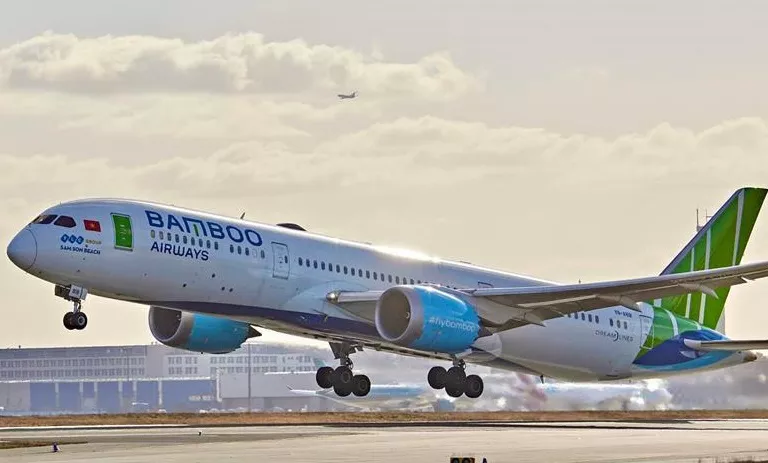Bamboo Airways, a Vietnamese airline, has experienced significant changes in its ownership structure since its establishment. Understanding these changes offers valuable insights into the airline’s strategic direction and operational dynamics.
Founding and Initial Ownership
Bamboo Airways was founded in May 2017 with an initial charter capital of VND700 billion (approximately US$30 million). The airline commenced operations in early 2019, aiming to provide both domestic and international flights.
Major Capital Increases and Ownership Consolidation
February 2021 Capital Increase
In February 2021, Bamboo Airways increased its charter capital by 50%, raising it from VND7,000 billion to VND10,500 billion (approximately US$456 million). This capital infusion was primarily contributed by:
- Mr. Trinh Van Quyet: Chairman of FLC Group and Bamboo Airways, who added VND1,738 billion (approximately US$76 million).
- FLC Group: Contributed VND550 billion (approximately US$24 million).
Following this capital increase, Mr. Quyet and FLC Group, along with related entities, held nearly 90% of Bamboo Airways’ shares, solidifying their control over the airline.
Strategic Shift: FLC Group’s Stake Reduction
March 2023 Announcement
In March 2023, FLC Group announced plans to divest its remaining stake in Bamboo Airways as part of a broader restructuring strategy. The group aimed to focus on its core businesses—real estate, resorts, and mergers and acquisitions—while addressing its debt obligations.
Ownership Breakdown Post-Divestment
Post-divestment, the ownership structure of Bamboo Airways was as follows:
- Mr. Trinh Van Quyet: Held a 55.5% stake in the airline.
- FLC Group and Affiliates: Retained a 21.7% stake.
- Public and Other Investors: The remaining shares were distributed among various investors, including Japanese nationals with significant experience in aviation.
Leadership Changes and Strategic Goals
June 2023 Leadership Restructuring
In June 2023, Bamboo Airways underwent a significant leadership change:
- Resignations: All five directors of the airline resigned, paving the way for new leadership.
- New Chairman: Phan Dinh Tue, former deputy general director of Sacombank, was appointed chairman in February 2024. His leadership was expected to drive the airline’s restructuring and development goals.
Financial Performance and Future Outlook
- 2023 Performance: Bamboo Airways reported a positive after-tax profit of VND236.8 billion (approximately US$10 million), a significant improvement from the previous year’s loss.
- 2024 Projections: The airline projected revenues of nearly VND4.9 trillion (approximately US$200 million) for 2024, with an expected after-tax loss of VND1.38 trillion (approximately US$58 million). Operational losses, excluding restructuring costs, were estimated at around VND500 billion (approximately US$21 million).
- Break-even Target: CEO Luong Hoai Nam expressed an ambitious goal to break even by 2025, with plans for profitability in subsequent years. The airline also aimed to list its shares on the stock exchange within three years.
Current Ownership Structure
As of early 2025, the ownership structure of Bamboo Airways is:
- Mr. Trinh Van Quyet: Maintains a majority stake of 55.5%.
- FLC Group and Affiliates: Hold a 21.7% stake.
- Japanese Investors: Including former Japan Airlines executives, who bring extensive aviation expertise to the airline’s leadership.
- Public and Other Investors: The remaining shares are held by various investors, reflecting a diversified ownership base.
Strategic Initiatives and Challenges
Bamboo Airways has embarked on several initiatives to strengthen its market position:
- Fleet Expansion: Plans to expand its fleet from eight narrow-body jets to 12 by the end of 2024, with a further increase to 18 by the end of 2025.
- Financial Restructuring: Efforts to reduce debt obligations, including the clearance of aircraft leasing debts, to improve financial stability.
- Operational Efficiency: Implementation of cost-saving measures, such as transitioning ground services to reduce expenses and migrating the Passenger Service System to achieve long-term savings. (vietnamnet.vn)
However, the airline faces challenges, including the need for additional capital to meet operational requirements and the ambitious targets set for financial recovery.
Conclusion
The ownership of Bamboo Airways has evolved through strategic investments, divestments, and leadership changes. The involvement of experienced investors and executives positions the airline for potential growth and success in the competitive aviation industry. However, achieving profitability and financial stability will require effective execution of its strategic initiatives and favorable market conditions.

